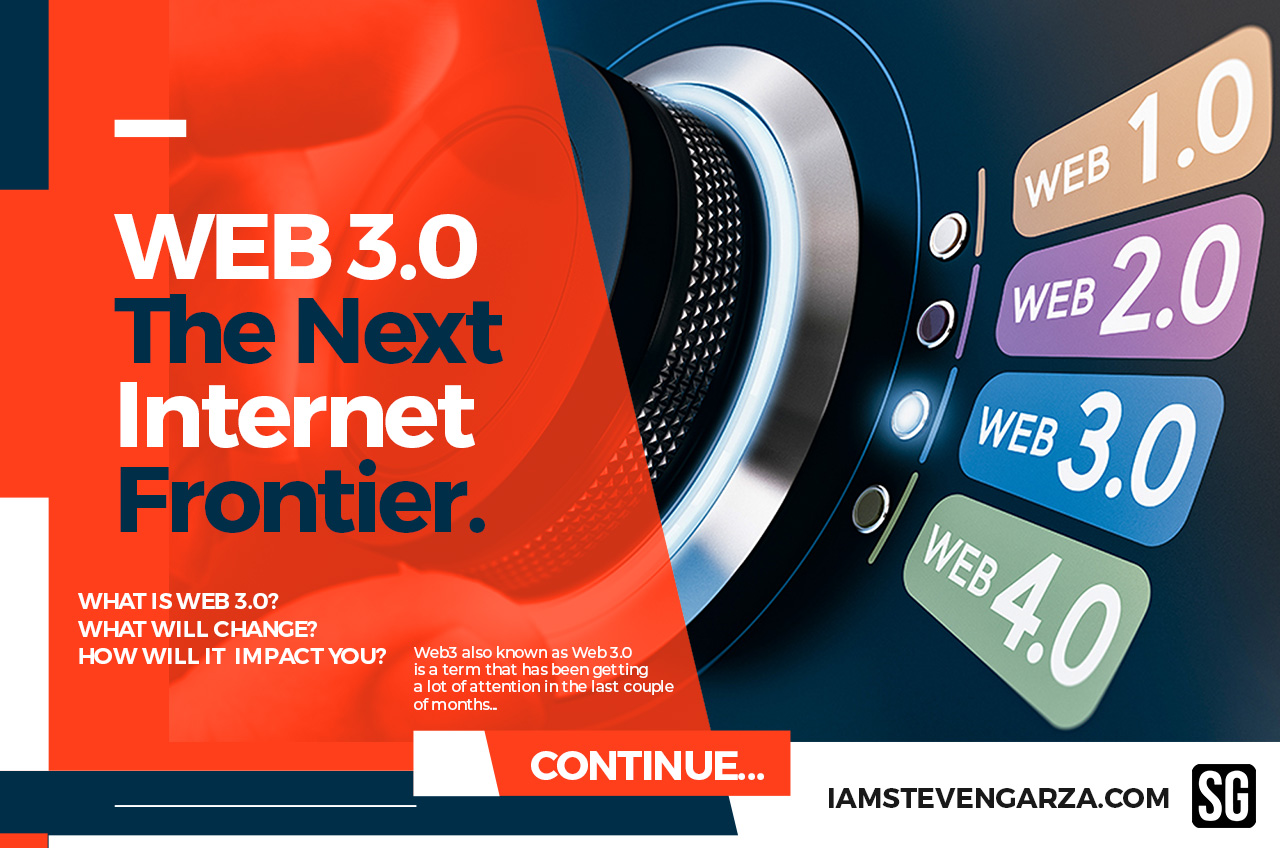Web3 The Next Internet Frontier.
- March 11, 2022
- 0 Comment
- Technology, Web3
- Posted by Steven Garza

Web3, the next iteration of the World Wide Web, represents a paradigm shift towards a decentralized and user-empowered internet. Built on blockchain technology, this emerging ecosystem aims to disrupt the current centralized model dominated by tech giants, fostering a more democratic and transparent online environment.
At its core, Web3 is underpinned by decentralization – power shifts from centralized entities to a distributed network of computers, creating an internet that is resistant to censorship and manipulation. This is made possible through blockchain, a secure and transparent public ledger for recording transactions and ownership.
Blockchain technology enables the creation of non-fungible tokens (NFTs), unique digital certificates that represent ownership of digital assets like artwork, music, or in-game items. By leveraging this technology, Web3 empowers users to not only create content but also truly own it, giving rise to an “ownership economy” where creators can directly monetize their work without intermediaries.
Table of Contents
Toggle
The Paradigm Shift: From Read-Only to Read/Write/Own
To understand Web3’s disruptive potential, we must examine its predecessors. Web 1.0 (1991) was the “read-only” web, consisting of static web pages hosted on ISP servers – a vast library of online documents with limited user interaction.
Web 2.0 (dot-com boom) ushered in the “read/write” web, fostering user-generated content through social media platforms, blogs, and wikis. Mobile accessibility further democratized access, creating a more interactive and user-driven online experience.
Web3 takes this evolution a step further, enabling a “read/write/own” model. Users can not only consume and create content but also own digital assets, challenging the centralized control of data and monetization by major tech companies.
Impact on the Digital Landscape
The implications of Web3 extend far beyond the technical realm, fundamentally reshaping various aspects of the digital landscape:
Digital Identity: Web3 paves the way for self-sovereign digital identities, allowing users to control their online presence and decide what information they share and with whom. This could take the form of digital wallets containing verifiable credentials, enabling secure access to different platforms based on user preferences. Projects like Unstoppable Domains (https://unstoppabledomains.com/) are exploring decentralized domain names and digital identities.
Content Creation: The rise of NFTs and the ownership economy enables creators to sell their work directly to fans, retaining ownership rights and fostering a more sustainable content creation ecosystem. Platforms like Catalog (https://www.catalog.works/) and Zora (https://zora.co/) are examples of Web3 marketplaces for digital art and collectibles. Creators can build direct relationships with their audiences, bypassing traditional intermediaries.
Gaming Revolution: Web3 games could introduce true ownership of in-game items, allowing players to transfer them across different games and fostering a more dynamic and user-controlled gaming experience. Projects like Decentraland (https://decentraland.org/) and The Sandbox (https://www.sandbox.game/) are exploring virtual worlds built on Web3 principles, where users can own and monetize their digital assets.
Decentralized Finance (DeFi): Web3 enables decentralized financial services, bypassing traditional intermediaries like banks. DeFi platforms like Aave (https://aave.com/) and Compound (https://compound.finance/) allow users to lend, borrow, and earn interest on their cryptocurrencies without a centralized authority.
Digital Marketing: Web3 presents a unique challenge and opportunity for digital marketers. Traditional methods relying on centralized platforms and user data collection will need to adapt. Marketers will need to focus on value creation, community building, and leveraging emerging decentralized marketing tools that respect user privacy. Companies like Brave (https://brave.com/) are exploring blockchain-based advertising models that prioritize user consent and privacy.
Challenges and Considerations
While Web3 offers immense potential, several challenges must be addressed for widespread adoption:
Scalability: Blockchain technology, the backbone of Web3, currently faces scalability issues in handling a larger user base. Projects like Ethereum 2.0 (https://ethereum.org/en/upgrades/) and Solana (https://solana.com/) are working on solutions to improve scalability and transaction speeds.
Accessibility: User interfaces and educational resources need to be simplified to ensure Web3 is accessible to a broader audience beyond tech-savvy individuals. Initiatives like Web3 for Beginners (https://www.web3beginners.com/) aim to provide educational resources and user-friendly tools to onboard new users.
Governance: Decentralized decision-making within Web3 projects requires careful consideration to ensure fair and effective leadership, often relying on community-driven governance models like decentralized autonomous organizations (DAOs). Projects like MakerDAO (https://makerdao.com/) and BitDAO (https://www.bitdao.io/) are exploring DAO governance structures.
Regulatory Landscape: As Web3 continues to grow, regulatory bodies will need to adapt to address potential risks and challenges, such as financial regulations for DeFi platforms and intellectual property rights for NFTs.
Environmental Impact: The energy-intensive nature of certain blockchain consensus mechanisms, like proof-of-work used by Bitcoin, has raised concerns about their environmental impact. Newer protocols like Ethereum’s forthcoming proof-of-stake mechanism aim to address these concerns by reducing energy consumption.
A New Dawn for the Internet
Web3 represents a paradigm shift towards a more decentralized, transparent, and user-empowered internet. While challenges exist, the potential benefits are undeniable. As this ecosystem continues to evolve, we can expect a transformation in how we interact, create, and conduct business online.
From self-sovereign digital identities to the rise of the creator economy and decentralized finance, Web3 promises to disrupt traditional models and foster a more democratic online world. As users gain greater control over their data and digital assets, the power dynamic shifts away from centralized tech giants toward a distributed network.
While mass adoption may still be years away, the foundations of Web3 are being laid by a vibrant ecosystem of developers, entrepreneurs, and thought leaders. As the technology matures and user interfaces become more accessible, we may witness a new dawn for the internet – one that prioritizes user empowerment, transparency, and decentralization.
Related
- Tags: Crypto, Cryptocurrency, DAO, DeFI, iamstevengarza, Internet, Metaverse, NFT, Non-Fungible Tokens, SmartContracts, Steven Garza, Technology, Tokens, Web 3.0, web3
